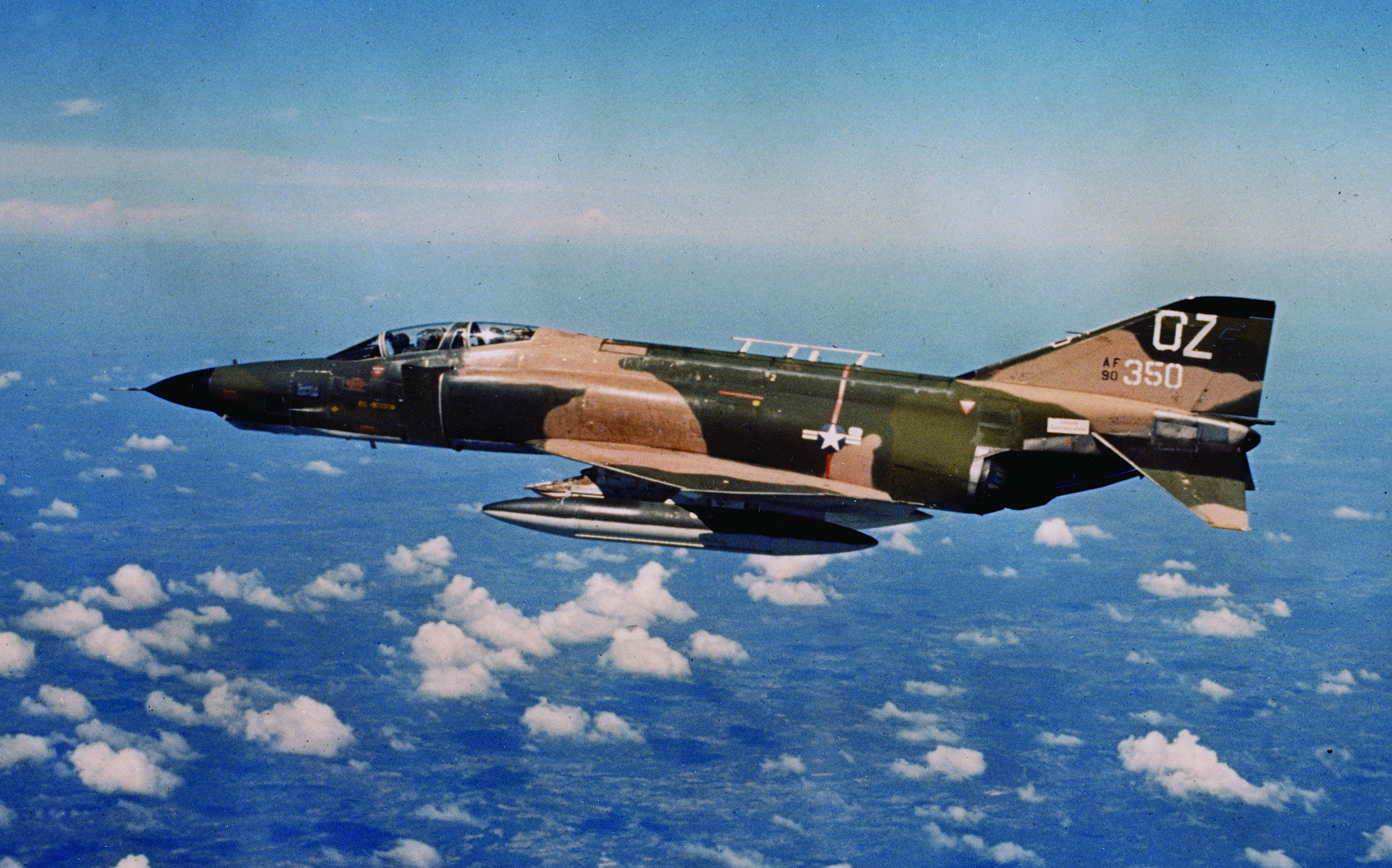The RF-4C photo Phantom collected valuable intelligence over Vietnam’s battlefields and beyond, flying “alone, unarmed and unafraid”
For me, the McDonnell RF-4C was just one model of aging Phantoms I flew as a backseat flight test engineer during the 1980s at Edwards Air Force Base. Although familiar with the legendary combat record of the F-4C, D and E, I knew little about the RF-4C’s mission beyond the tactical reconnaissance community’s mantra of “alone, unarmed and unafraid.”
The photoreconnaissance version of the F-4 was critical to air power thinker John Boyd’s “OODA loop” for combat planning: observe, orient, decide, act and repeat. “You can’t even get started on the OODA loop if you can’t observe,” said retired RF-4C pilot Brig. Gen. Rudi Peksens, “and that’s where reconnaissance comes in.” Before satellites and remotely piloted aircraft, aircrews put their lives in danger to collect information.
Prior to the RF-4C, the McDonnell RF-101 Voodoo ruled the low-level reconnaissance skies, but that aircraft’s less sophisticated cameras limited it to daylight-only operations. Designed to overcome the RF-101’s shortcomings, the RF-4C was a major overhaul from earlier F-4 models. For prototypes, engineers lengthened the nose on two F-4Bs to accommodate advanced radar and camera systems: film, infrared and side-looking radar. The long-nose variant also became the basis for the later F-4E model. The first production RF-4C flew in May 1964, as the Vietnam War was beginning to ramp up. “The RF-4 was perfect for its time,” Peksens said. “[It] gave us supersonic speed, two engines and an airplane built mostly of steel that could take a licking and keep on ticking.”
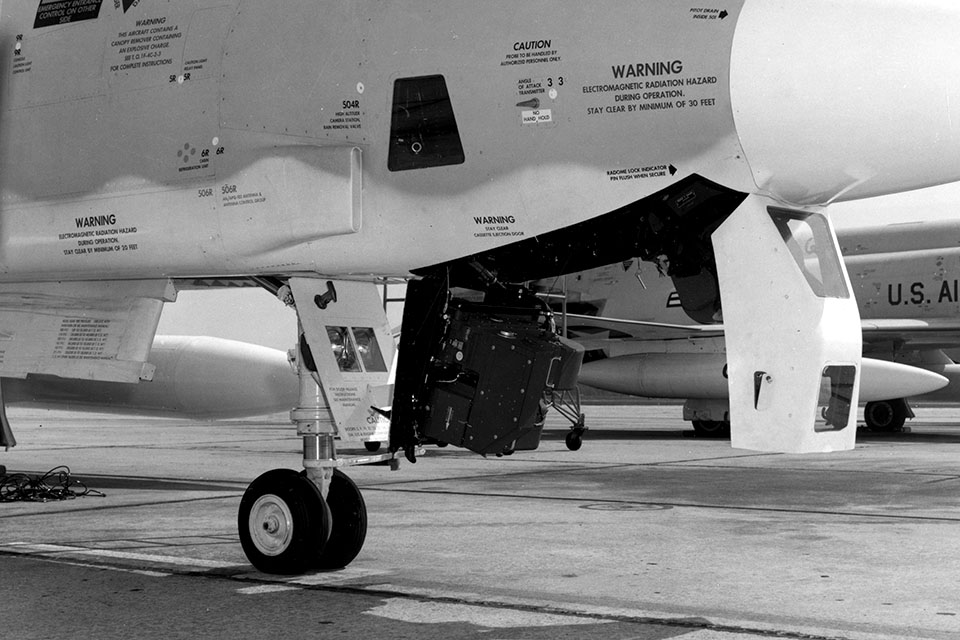
Kirk Ransom, fresh from pilot training, arrived at Shaw Air Force Base in South Carolina in September 1964 to train with the first cadre of RF-4C pilots. The U.S. Air Force initially funneled inexperienced pilots like Ransom into the rear cockpit as pilot systems operators, abbreviated PSO and pronounced “pay-so.” Training was not optimal: Poor rear-seat visibility disoriented many PSOs and made them airsick, and radar training took place on an ancient Boeing B-47 system, since early aircraft were delivered without full equipment. New airplanes arrived at Shaw almost every day, and Ransom picked up seven jets from the St. Louis factory, even signing for one because his higher-ranking instructor, an Australian exchange pilot, couldn’t. Ransom still marvels, “A second lieutenant signed for a $3.5 million airplane!”
After training, Ransom moved to the 16th Tactical Reconnaissance Squadron (TRS) at Shaw, the first operational RF-4C squadron. During an August 1965 inspection, a general told Ransom’s squadron “how bad we were.” On October 27, 16th TRS pilots ferried nine airplanes to Southeast Asia. After seven air refuelings and a stop in Hawaii, the pilots landed at Tan Son Nhut Air Base near Saigon on October 31. “Two guys flew combat missions that day,” said Ransom. “No one knew what they were doing.”
Crews soon learned that tactics developed for a World War III scenario were woefully inadequate for the Johnson administration’s restrictive targeting practices and Southeast Asia’s mountainous terrain and dense anti-aircraft defenses. While cruising northbound at 34,000 feet, crews passed bright lights on mountains that indicated someone had forwarded their position via telephone to gunners lying in wait. The unarmed RF-4Cs were far from defenseless, however, as pilots quickly developed deceptive maneuvers to counter the gunners. Nearing the actual target, they descended to 3,500 feet, staying above .50-caliber machine gun range. About three miles from the target, the front seat pilot yanked into a 75-degree bank turn and then rolled out, held it for 15 seconds, then did another rapid turn and roll out, and then turned on the radar for one second to make the North Vietnamese think the aircraft was headed someplace else. Ransom recalled, “As soon as you made the [turn], the whole sky lit up with tracers,” but the maneuvering largely kept them from harm.
Recce crews also found that the RF-4C could outrun many threats. Designers expected the new airframe to have more drag than earlier models, but it turned out the RF-4C was fastest. However, crews often couldn’t take full advantage of that speediness during missions over North Vietnam—flying above 480 knots made navigation harder, increased fuel consumption and the increased turn radius made threat evasion maneuvers less effective. Woody Cox, an RF-4C pilot from the early 1970s, also noted, “The fighter escorts had difficulty keeping up with us at higher speeds due to the drag of their external munitions loads and increase in fuel consumption.”
Bruce Edwards, who flew RF-4Cs in Vietnam in 1967, sensed that the escorts didn’t always provide much protection anyway. “They wanted to get a MiG, so we were like trolling for them,” he said. “We usually never even saw them because they were up high trying to save fuel in case they got to jump a MiG.”
For the most dangerous RF-4C mission, dubbed “Barrel,” crews flew through a section of North Vietnam called Route Pack 6A on their way to targets in Hanoi. For Barrel missions, the photo Phantoms carried three external fuel tanks: one 360-gallon tank on the centerline and a 270-gallon tank under each wing. After taking off from Udorn Air Base in Thailand, pilots bled down the centerline tank until it ran dry around the Plain of Jars in Laos, which Edwards said “must be chock full of centerline tanks because we punched them all off there.”
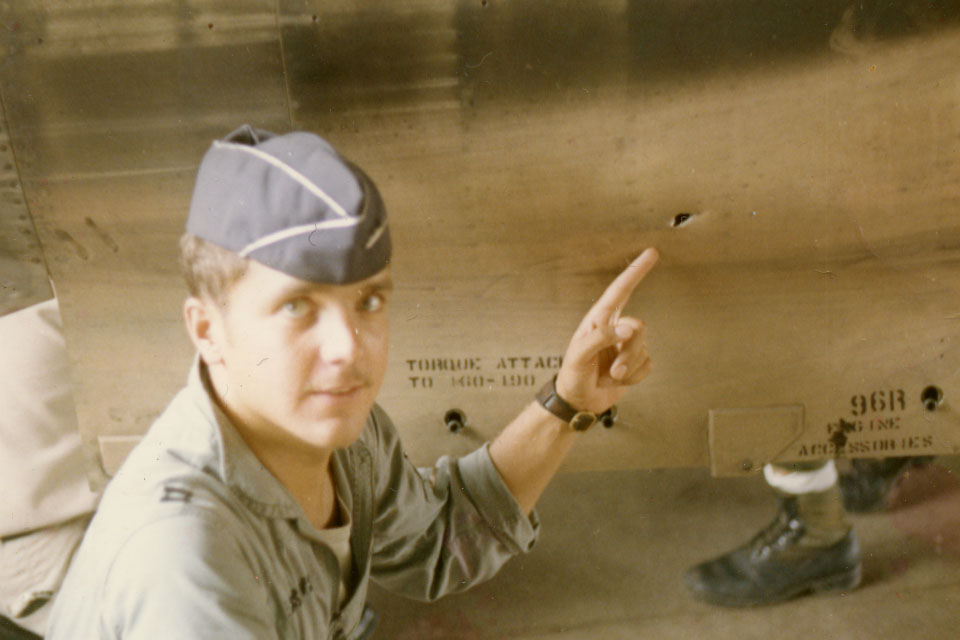
To get the best pictures, crews usually flew daytime missions over the North between 11,000 and 14,000 feet altitude, making the aircraft vulnerable to surface-to-air missiles: From SAM launch to possible impact was about 10 seconds. For SAM defense, dispensers on the rear of the RF-4C ejected chaff to fool radar-guided missiles, and a radar-warning receiver flashed threats on cockpit displays, along with chirping in headsets. The warnings unnerved some pilots, including Edwards: “Your headset was just full of chirps, so many threats that you just turned it off and occasionally glanced at it to see if there were any strong strobes.” On one mission, he recalled, “I got a launch light [strobe]. I popped off two chaff clouds and about two seconds later there was a detonation behind me from a SAM with no launch light. Gave me a big overpressure, kind of pushed the airplane, a sudden jolt.” The overpressure apparently caused his right engine to stick in afterburner, but he shut it down and restarted it for a less eventful trip back to Thailand.
The RF-4C’s twin engines helped bring many crews home in one piece. Alan Chase, who flew the photo Phantom at Udorn in 1968-’69, remembered an engine failure over northern Laos, but said the return to base “was a non-event….If I’d been up there in a single-engine airplane I’d still be up there.”
Even when it couldn’t outrun everything, the RF-4C’s overall ruggedness saved lives. Ray Ross’ aircraft was hit by a SAM on November 17, 1965, during a mission he said was “suicide” to start with. A last-minute change in target put him 45 minutes behind schedule, enough time for North Vietnamese radars to cool down and restart from an earlier strike. “As soon as I turned in down the railroad [target], the sky lit up,” Ross recalled. “I had SAMs flying at me, I had anti-aircraft flying at me…the first SAM went above me and exploded, the second SAM was too low and it exploded and didn’t bother me and the third SAM was close enough that when it exploded [the shrapnel] started my airplane on fire.”
Ross shut down his engines and glided eastward toward the Gulf of Tonkin, planning to bail out at 5,000 feet, probably over enemy territory. A few minutes later the fire light went out. “I have no idea why,” said Ross, “if the fire went out, or the wires burned through, or the bulb burned out,” but he managed to restart the engines and fly far enough over the water to spot an aircraft carrier, USS Intrepid. Both Ross and his backseater ejected and were picked up.
In addition to speed and dual engines, the guy in back, or GIB, provided yet another defense. Bruce Edwards appreciated the extra set of eyes. “During daytime missions, the GIB was like a sensor selector,” he said. “He ran the INS [inertial navigation system] and let you keep your head out of the cockpit more.”
Although pilots initially manned the rear cockpit, it didn’t take long for the Air Force to realize that weapon system officer (WSO) training cost about one-third that of pilots, and WSOs supplanted PSOs. Even without formal pilot training, several WSOs managed to land RF-4Cs after their pilots were injured.
On September 16, 1969, during a mission over Laos, Gerry Dobberfuhl recounted: “Our cockpit exploded and I heard screaming from the front. We started diving and I managed to pull back on the stick and we just missed the ground and the mountain in front of us.” Since he had heard the Laotian communists—the Pathet Lao—were taking no prisoners, Dobberfuhl initially headed for North Vietnam, but realizing the aircraft was still flyable, turned back west toward Thailand. Crossing the river dividing Laos and Thailand, he pulled the throttles to idle and headed for Nakhon Phanom Air Base, just inside Thailand’s eastern border. The barely conscious pilot lowered the gear and flaps, but Dobberfuhl couldn’t tell if the tail hook was down. To see the runway, he kicked the rudder back and forth during final approach. “The last 300 feet was pure luck,” he said. “The greatest relief I ever felt in my life was when that tail hook grabbed the wire.” Both pilot and airplane lived to fly another day.
RF-4C crews often searched for vehicles and assessed battle damage on the Ho Chi Minh Trail, which ran primarily along Laos’ eastern border. Most trail missions were at night, when many aircrew admitted they often didn’t live up to the “unafraid” part of their motto. WSO Ken Butler said his unit lost several RF-4Cs at night and “never knew what happened to them—the jungle just swallows them up.” For night missions, crews dropped photoflash cartridges to light up a target with 260 million (later one billion) candlepower for taking pictures. In the South, crews could use up to seven photoflashes, but Bruce Edwards said over the North they were limited to three, “because on the fourth flash, you were probably going to be occupying the same space as a bunch of AAA.” As a result, most night flights used less-detectable infrared cameras or side-looking radar to capture images.
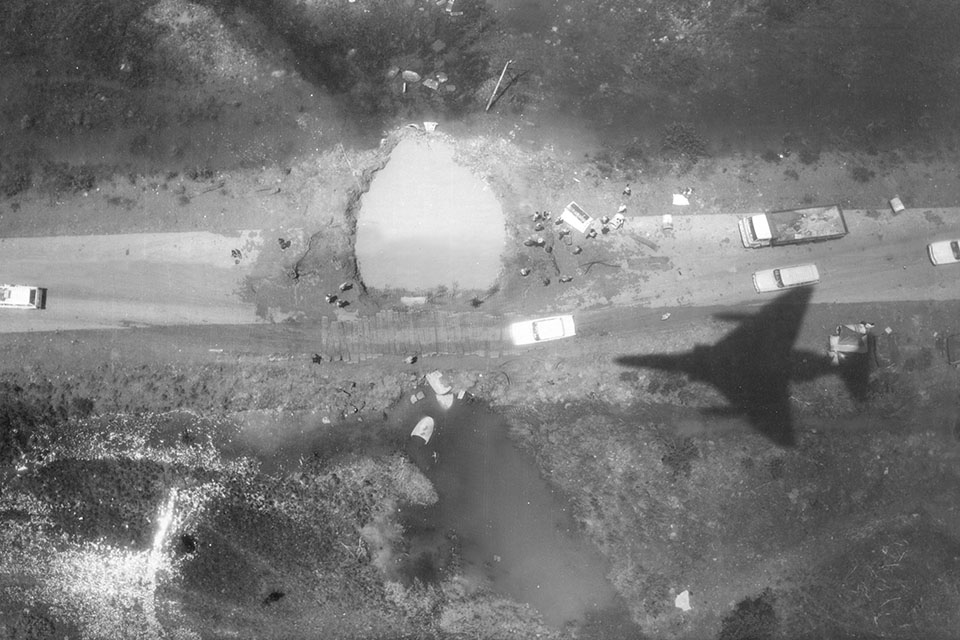
After an RF-4C landed, the mission continued with technicians taking the film cassette to the Photographic Processing and Interpretation Facility (PPIF), a mobile 25-shelter self-contained system with its own generators, fuel and water bladders. Richard Pirrello, a mechanic at Udorn, said RF-4Cs shot one million feet of film each month in 1969 for PPIF processing. While the aircrew debriefed operations and maintenance personnel, photo lab technicians developed the film in a darkroom. The aircrew then arrived to help photo interpreters align film images with error-laden maps.
Al Crane, who ran a PPIF at Tan Son Nhut, recalled that ground units sometimes wanted to do their own interpretation, so film was flown to U.S. Army and allied Republic of Korea and Australian units. For units not operating near an airfield or helicopter landing zone, parachute-equipped canisters containing photos or duplicate negatives were dropped via a tube attached to the side of a “Blue Canoe” U-3 (militarized Cessna 310).
Although the RF-4C cut its teeth in Vietnam, the aircraft also had important Cold War missions. Every two weeks, a flight of photo Phantoms from Japan’s Kadena Air Base deployed to Osan Air Base in South Korea to fly Peacetime Aerial Reconnaissance Program (PARPRO) missions along the DMZ. The aircraft carried a telephoto camera in a monstrous “Bench Box” pod that hung so low under the fuselage it could snag arresting cables at the end of the runway. WSO Ralph Delperdang said one week after he flew his first, relatively benign PARPRO mission in 1979, the South Korean president was assassinated and U.S. forces went into high alert. After that, he said, “Flying along the DMZ, the threat scope all lit up to the north.”
Delperdang also worked at Eglin AFB in Florida, overseeing upgrades to the RF-4C that sustained it into the 1990s: improved navigation equipment, the Pave Tack laser targeting system and a terrain-following system. Another post-Vietnam RF-4C upgrade was the Tactical Electronic Reconnaissance (TEREC) system, a pod loaded with radar detection equipment for locating SAM sites. WSO Paul Thompson, who flew RF-4Cs during the late 1980s at Bergstrom AFB in Texas, said the TEREC-equipped aircraft had a reputation for poor stability and fatal accidents, since the pod moved the Phantom’s center of gravity dangerously close to the aft limit. “The nose would hunt in a circle, especially on a tanker,” Thompson recalled. “We got spurious inputs; the pilot wouldn’t command anything and there would be a little bit of a roll, and I’d say, ‘Hey, what are you doing up there?’ The pilot would say, ‘Nothing. I thought you [bumped the stick] with your knee.’” The aircraft were also aging rapidly; ground aborts became common and Thompson’s unit departed Bergstrom with 20 airplanes to ensure 12 of them stayed airborne long enough to reach Aviano Air Base in Italy.
The non-weapons status of the RF-4C came in handy at times during a Cold War crisis. Rudi Peksens said the aircraft “was useful not only for collecting intelligence but also for signaling to people who were watching. [During the Polish Solidarity crisis in 1980-’81] we sent RF-4s from Zweibrücken [Air Base, in Germany] up into the Baltic Sea so any nation watching could see that the U.S. Air Force was there and interested…using soft power, showing a presence, where a fighter or bomber might have been too strong a signal.”
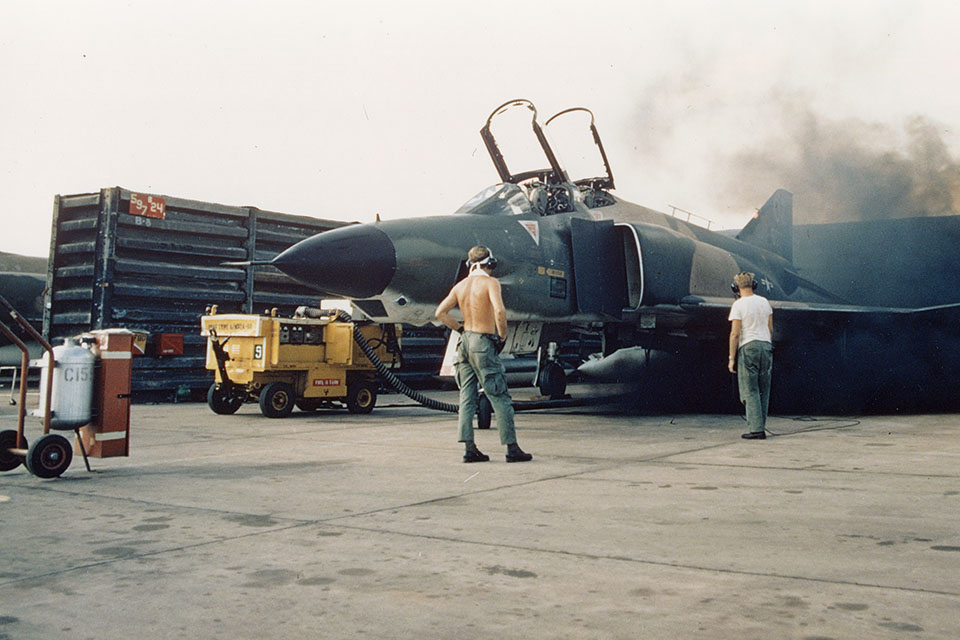
In 1987 an RF-4C had the dubious distinction of being one of a handful of U.S. aircraft shot down by friendly airplanes during peacetime. WSO Randy Sprouse said he took off from Aviano for an exercise with the U.S. Navy, and an F-14 Tomcat began trailing the RF-4C as they refueled. After refueling, the RF-4C crew spotted the carrier USS Saratoga in the Mediterranean Sea and began descending to positively identify the ship. “At about 10,000 feet, we felt like a bus had hit us,” said Sprouse. “We thought maybe we had had a midair.” It wasn’t a midair: The trailing F-14 pilot had inadvertently launched an AIM-9 Sidewinder air-to-air missile. Sprouse pulled the ejection handles and recalled, “On the way down, we [could] see the helicopter on the carrier starting to fire up to come pick us up.” Both Sprouse and the pilot survived, the pilot with serious injuries.
After Vietnam, the Air Force transferred many RF-4Cs to the Air National Guard and some units picked up new missions, including drug interdiction and disaster relief. Charles “Hap” Arnold said his Guard unit in Ontario, Calif., helped with $15-20 million each year in drug seizures, often by using infrared cameras and flying at 500 feet above the ground at daybreak to look for marijuana in the high desert of Antelope Valley.
A few Guard units tried to eliminate the RF-4C’s “unarmed” description by adding Sidewinders. But Woody Cox recalled: “The Sidewinder thing never got anywhere. Some people thought if you put missiles on the RF-4, the pilots would just want to chase MiGs.” Some aircraft were modified with launch rails and a unit from Reno deployed with Sidewinders during Operation Desert Storm in 1991, but after aircrew from Bergstrom arrived who had not trained with the missiles, the weapons were removed.
So many RF-4Cs retired during the 1980s that there was a recce shortfall in Desert Storm. “It was before we had enough unmanned systems,” Peksens explained. “When I flew [combat missions] from Incirlik Air Base [in Turkey]…for the first week or so…we didn’t know if we were successful or not because we had no reconnaissance. We called back to Zweibrücken and pulled a detachment [of RF-4Cs] en route to the boneyard to help us with the first and last part of the OODA loop.”
No F-4 story is complete without mentioning maintenance nightmares. John Grieve, who flew the Phantom in the 1970s, described the worst nightmare: a circuit breaker box underneath the rear ejection seat. Resetting a circuit breaker in the box required removing the ejection seat, a job that could take a maintenance team all night.
All F-4 variants experienced frequent hydraulic system failures. Crew chief John Muhlig remembered a 1965 landing by aircraft serial no. 64-1004 after one such failure: “The pilot snagged the [arresting gear], but he was still at full throttle and the chain lifted him off the ground and punched a strut through a wing and crippled the other [after hitting the ground again]. It was a hangar queen for one and a half years.”
That tail number sounded familiar, and on checking my logbook I discovered I flew several hours in 64-1004 after it wound up at Edwards. The aircraft never recovered from its landing incident: In the 1980s, it still had a reputation as a hangar queen. RF-4C 64-1004 is now on display at the Air Force Flight Test Museum at Edwards.
Retired U.S. Air Force officer Eileen Bjorkman is a freelance writer and author of The Propeller Under the Bed: A Personal History of Homebuilt Aircraft. Her second book, Unforgotten in the Gulf of Tonkin, will be published in 2020. Further reading: USAF McDonnell Douglas F-4 Phantom II, by Peter E. Davies; and Colors and Markings of the Recon Phantoms, by Bert Kinzey and Ray Leader.
This feature originally appeared in the November 2019 issue of Aviation History. To subscribe,Click here!

